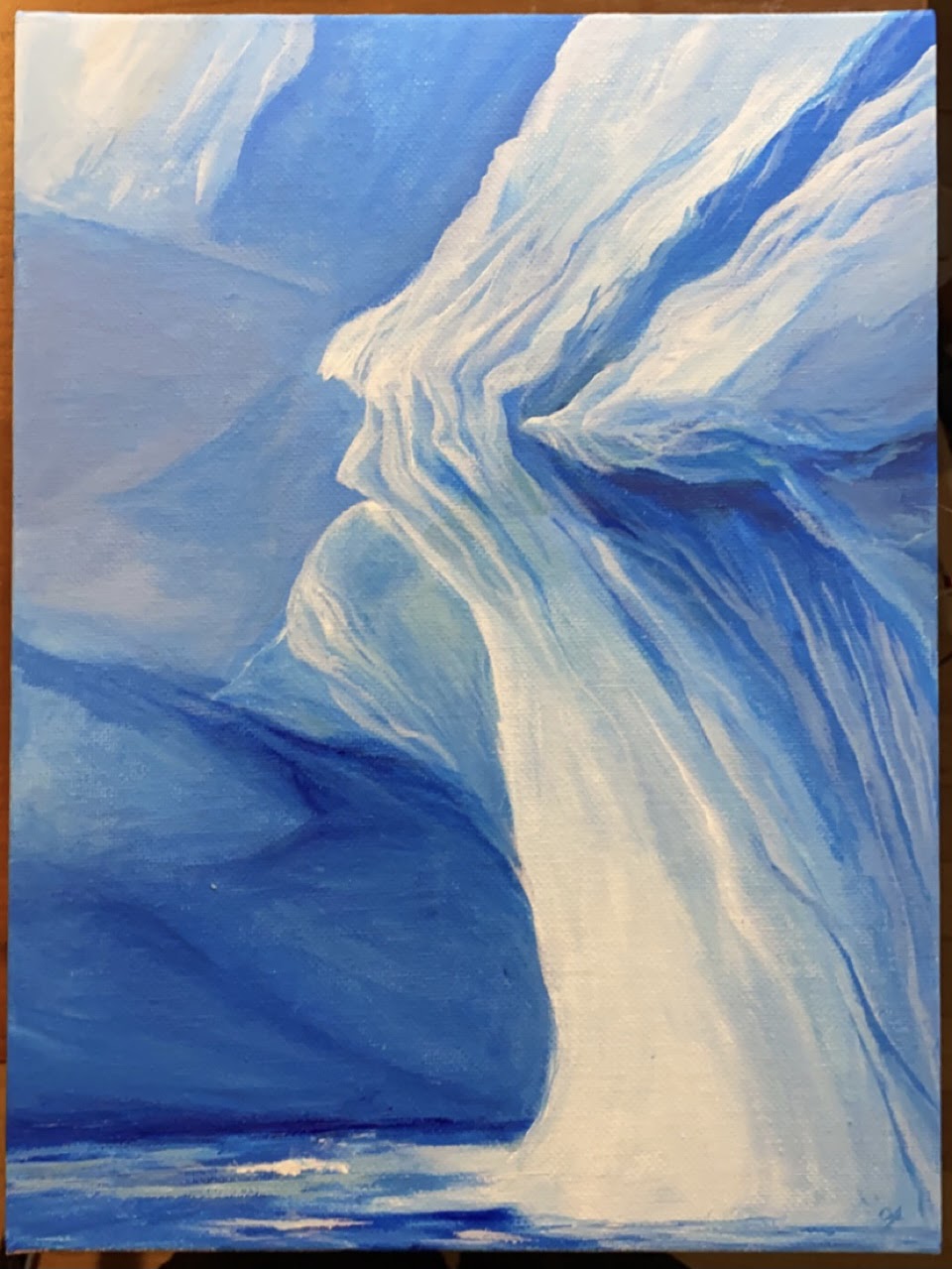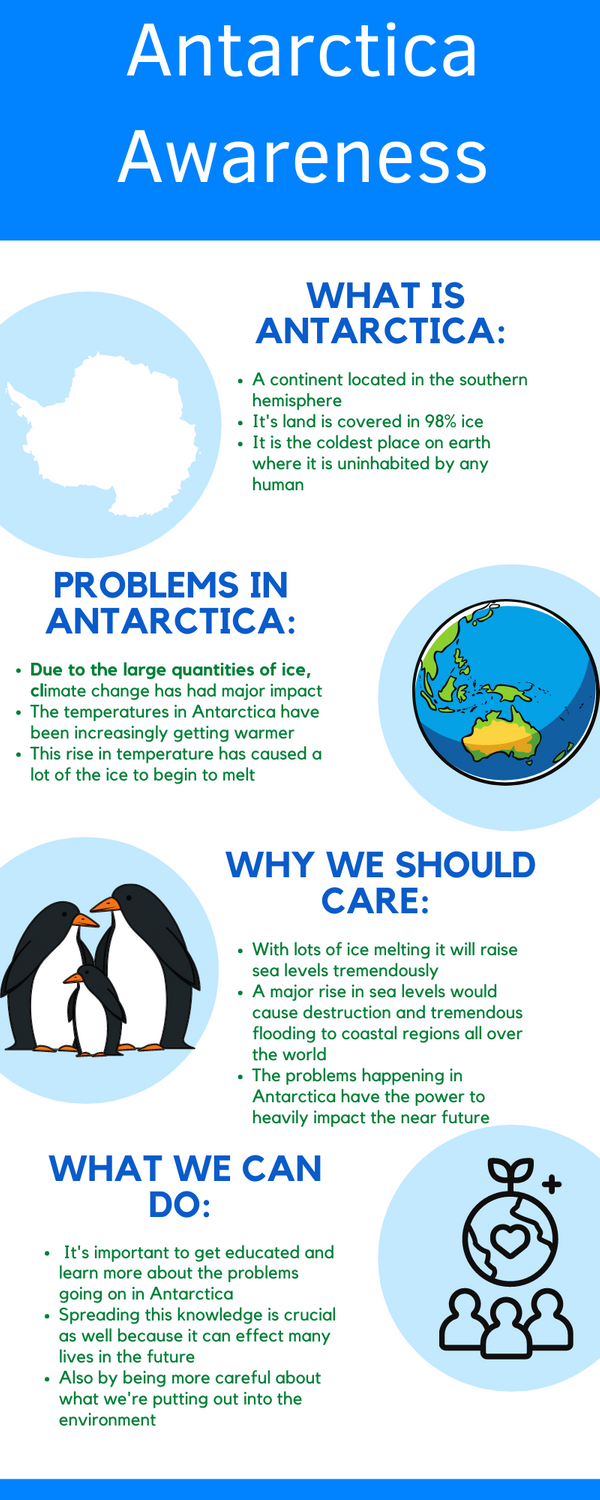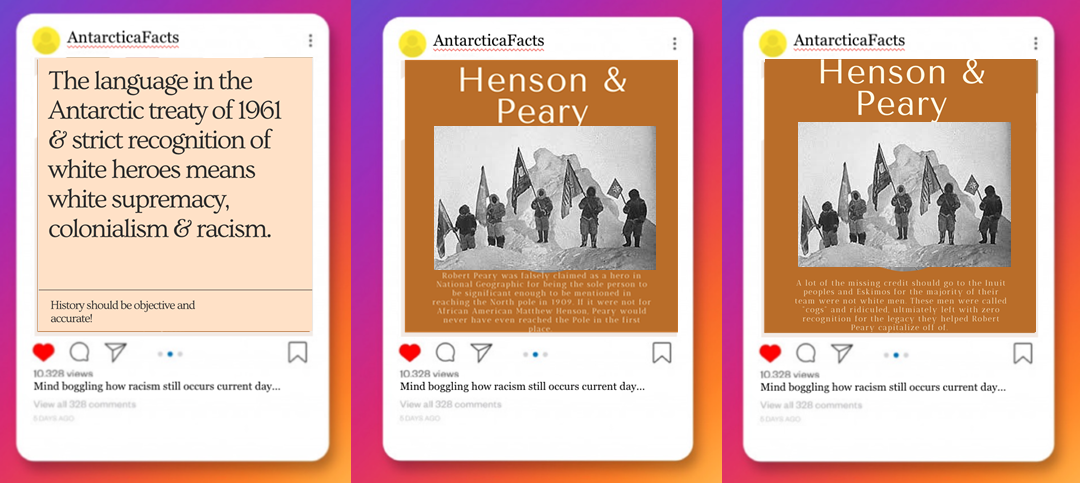Teaching
Instructor of record, Fall 2020 (‘Antarctica: the Coolest Continent’, NATSCI 191-01 and -02): I designed and taught an introductory course to incoming first-years. This course explored a range of different topics all relating to Antarctic science, for example: the past and future of the ice sheet; basic climate science and its applications; art and culture in Antarctica; the geopolitical setting and history of Antarctic exploration; and how all these factors intertwine with issues of diversity and inclusion in Antarctic science today.
For their final projects, I asked students to delve deeper into class material by further exploring a topic relating to Antarctic science through the medium of their choice. This resulted in a variety of creative expressions as students explored their own interests and gained new knowledge and perspectives. I include some examples below (described in students' own words, with their permission):

“The Tempo of Blue: acrylic on canvas (7"X11"). This is a painting of where ice meets the ocean in Antarctica. I especially liked this idea because I did not include any scaling features. This allows for space to imagine how grand this ice wall could be... or how small. Its size is completely ambiguous, reflecting the varying expanses and shapes of the continent's features.”
“For my intended message/audience for the video, I imagined this to be an informative commercial or short video about Antarctica, focusing on people who knew little about the place or a younger audience. For both demographics, they view Antarctica as mostly just ice and penguins. The message portrayed in my video that there are a lot more biodiversity and geographical diversity to the continent than these people would initially think. By putting together all these separate clips in a short a concise format, it brings that message across quickly and efficiently. “
“Illustrated story about two boys (one from the present & one from the future) working together to prevent the sea level rise as well as the destruction of Antarctica.”
Instagram posts on racism and colonialism at the poles. “This part of the history of Antarctica is not taught in the standard education system in America, and not only that, but expedition sites even contribute to the systemic racism in terms of giving unfair and delegitimate credit to people just because of their white skin.”


